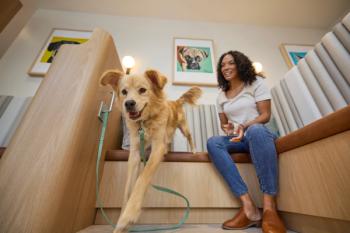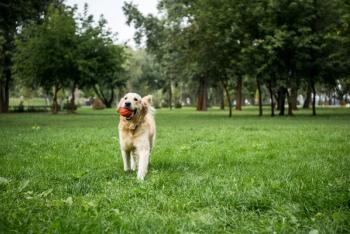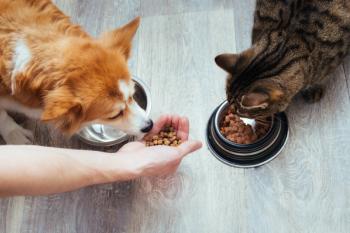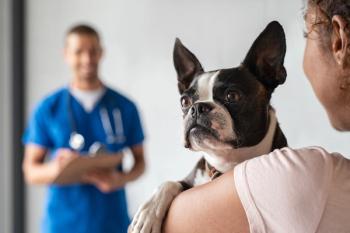
Fluorescent Imaging Technique Reliably Measures Dental Plaque in Cats
Quantitative Light-induced Fluorescence is an imaging technique that reliably detects dental plaque coverage in adult domestic short-haired cats.
Researchers in the United Kingdom demonstrated the reliability of Quantitative Light-induced Fluorescence (QLF) in detecting dental plaque coverage in adult domestic short-haired cats. Results of the study were published recently in Research in Veterinary Science.
Periodontal disease is a common dental condition in pets. It is caused by prolonged plaque accumulation, which can lead to gingivitis and eventual bone loss. The reported incidence of feline periodontal disease—3% to 24%—is likely much lower than the true incidence due to challenges in detecting and diagnosing this condition. Because compliance with regular tooth brushing is low for cats, dental diets are often recommended for reducing feline dental plaque accumulation.
Current plaque measurement methods, such as the modified Logan and Boyce technique (mLB), involve applying a stain to the teeth and rating plaque coverage using an ordinal scale; these methods are subjective. In contrast, planimetric methods, which use imaging and computational analysis, provide objective plaque measurements. QLF imaging is a planimetric method that uses the natural fluorescence of plaque and enamel to measure plaque coverage.
Study Methods
Using a crossover design, researchers measured dental plaque in 24 adult cats. Following a professional dental cleaning, cats ate a control or dental diet for 4 weeks; plaque coverage was then measured using the QLF and mLB techniques. After a second dental cleaning, cats were switched to the other diet and plaque coverage was measured again. The buccal crown surface of 14 teeth were evaluated:
- Mandibular first molars
- Maxillary and mandibular canines
- Maxillary and mandibular third and fourth premolars
For QLF imaging, researchers captured images before and after applying a disclosing stain to the teeth; a software program then automatically calculated plaque coverage percentage. For the mLB technique, ordinal scales were used to rate plaque coverage and thickness following stain application.
The researchers used QLF images from 12 cats each to evaluate intra-operator repeatability (images taken by 1 individual) and inter-operator reproducibility (images taken by 3 individuals). Efficacy of each technique was also evaluated.
Results
The QLF technique demonstrated a markedly lower detection of undisclosed plaque (before stain application) than disclosed plaque (after stain application). Only disclosed plaque coverage was used for further testing.
Repeatability and Reproducibility
For repeatability and reproducibility testing, mean plaque coverage ranged from 13% to 87%, with mandibular canines having the least plaque coverage. When averaging the percentages of plaque coverage, variability was low (<1% to 3%), indicating excellent repeatability and reproducibility. Importantly, variability was low even when plaque coverage percentages were adjusted for tooth size.
Product Efficacy
Researchers investigated the effect of diet on plaque reduction. For both measurement techniques, plaque accumulation was reduced by about 14% when cats ate the dental diet; this finding indicated the significant effect of diet on plaque reduction and demonstrated a good level of agreement between the two techniques.
Researchers also performed a retrospective analysis to determine how many cats would be needed to detect a 15% plaque reduction with at least 90% power for each technique. Power analyses indicated that the QLF technique would require only 9 to 10 cats, while the mLB technique would require at least 30 cats. The authors noted that requiring so few animals for testing efficacy is an advantage for the QLF technique and aligns with the 3 R’s of humane animal research (replace, reduce, refine).
Conclusion
Taken together, these study results suggest that the QLF imaging technique is “a [statistically] sensitive, repeatable, and reproducible method for the detection and measurement of dental plaque in cats,” the authors wrote.
Dr. JoAnna Pendergrass received her Doctor of Veterinary Medicine degree from the Virginia-Maryland College of Veterinary Medicine. Following veterinary school, she completed a postdoctoral fellowship at Emory University’s Yerkes National Primate Research Center. Dr. Pendergrass is the founder and owner of JPen Communications, a medical communications company.
Newsletter
From exam room tips to practice management insights, get trusted veterinary news delivered straight to your inbox—subscribe to dvm360.






